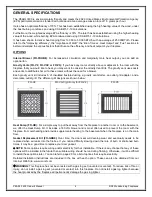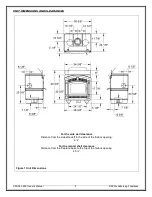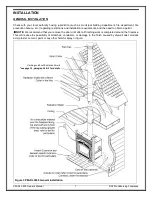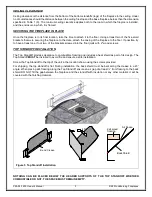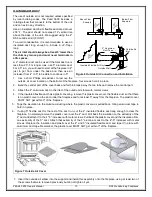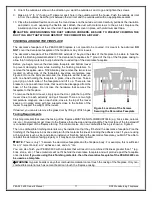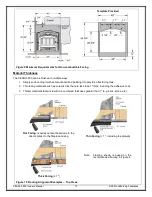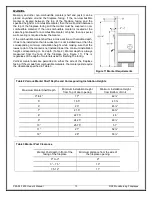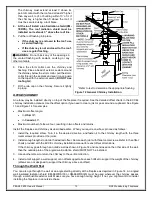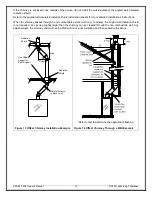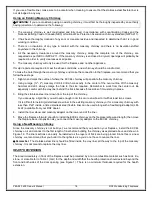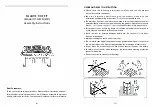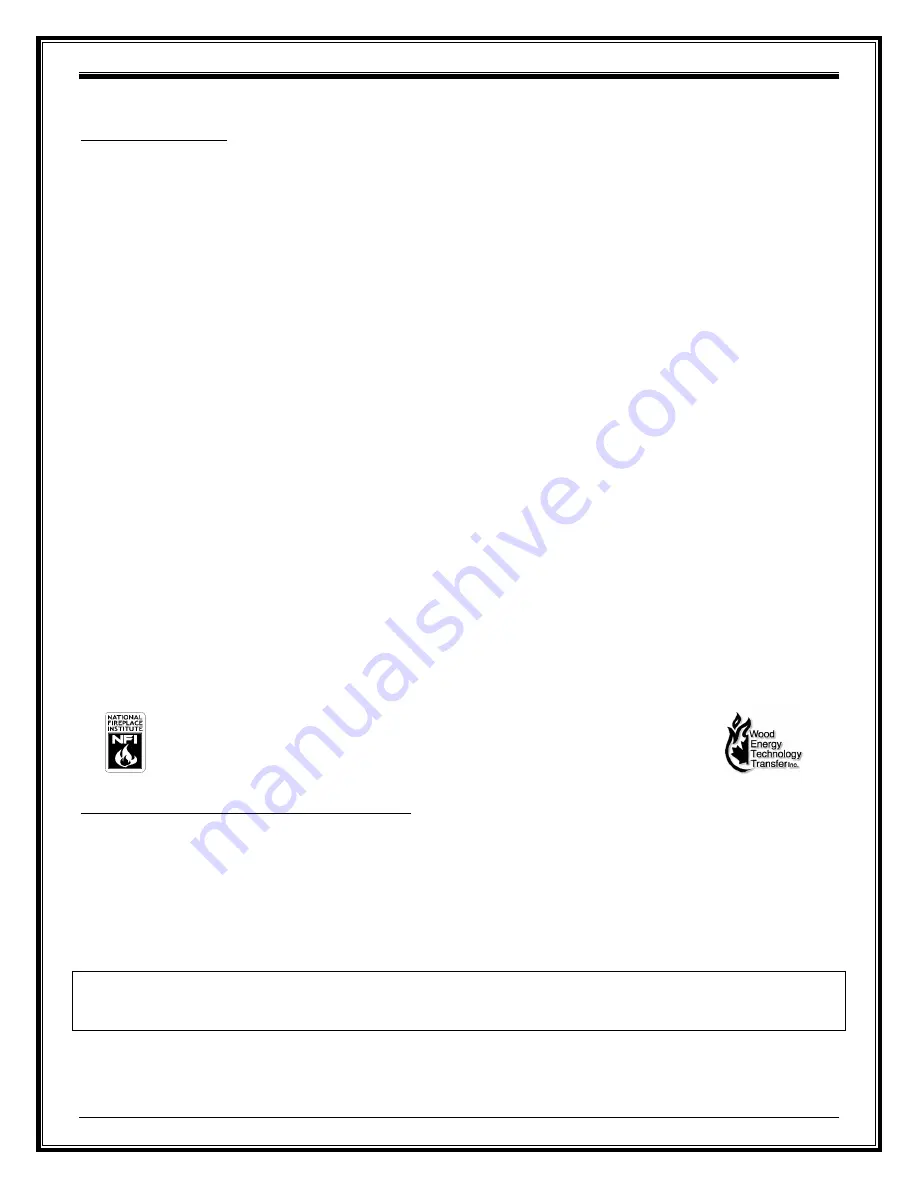
PEARL 3600 Owner's Manual
3
RSF Woodburning Fireplaces
SAFETY FIRST
DO'S AND DONT'S
If this fireplace is not properly installed, a house fire could result. For your safety, follow the installation
directions. Contact your local authority having jurisdiction (such as municipal building department, fire
department, fire prevention bureau, etc.) regarding restrictions and installation requirements, and the need
to obtain a permit.
To ANYONE using this fireplace: these
DO's
and
DONT's
are for your safety.
1.
DO
read this instruction manual before lighting your first fire.
2.
DO
burn seasoned wood fuel or densified fuel logs or a combination of densified fuel logs and wood fuel.
3.
DO operate the fireplace with the door fully closed
. If the door is left partly open, gas and flame can be
drawn out of the fireplace opening, creating both fire and smoke hazards.
4.
DO
keep all combustible materials (furniture, firewood, etc.) at least 4' away from the front of the fireplace.
5. This fireplace needs periodic inspection and repair for proper operation.
DO
learn to properly use it and maintain
it.
6. DO
have at least one smoke detector on each level of the house and at least one carbon monoxide detector.
7. To avoid glass breakage,
DO NOT
slam the fireplace door.
8.
DO NOT
ever use gasoline, gasoline-type lantern fuel, kerosene, charcoal lighter fluid or similar liquids to start
or freshen up a fire in this fireplace. Keep all such liquids well away from the fireplace while it is in use.
9.
DO NOT
overfire the fireplace. If you are unable to slow down the burn rate of the fire or if the chimney connector
behind the top louver glows red, you are overfiring the fireplace.
10.
DO NOT
use a fireplace grate or other products not specified for use with this fireplace.
11. The burn rates are set by the manual air control at the factory.
DO NOT
tamper with the air control.
DO NOT
install a flue damper that would allow you to reduce the chimney draft and thus slow the minimum burn rate.
12. To avoid damaging the fireplace,
DO NOT
operate it in a manner inconsistent with the operating instructions in
this manual.
13.
DO NOT
install an insert in this fireplace.
NOTE:
We strongly recommend that our products be installed and serviced
by professionals who are certified by the National Fireplace Institute in the
U.S. or by Wood Energy Technology Transfer Inc. in Canada.
CREOSOTE: FORMATION AND REMOVAL
When wood is burned slowly, it produces tar and other organic vapors which combine with the expelled moisture
from the wood to form creosote. The creosote vapors can condense in the relatively cool chimney of a slow burning
fire. As a result, creosote residue accumulates on the flue lining. When ignited, this creosote makes an extremely
hot fire.
The chimney should be inspected periodically during the heating season to see if a creosote build-up has occurred.
The presence in a chimney of soot or creosote in excess of 1/8" (3mm) thick will indicate the need for immediate
cleaning, possible modification of burning procedures, and more frequent inspections.
WARNING: BURN DRY WOOD ONLY.
DO NOT BURN: DRIFTWOOD, TREATED WOOD, COAL, GARBAGE, OR PLASTIC
Do not use construction scraps (e.g. 2x4 or plywood scraps) as your only supply of fuel as you can overheat and
seriously damage the fireplace. See Fuel section for more details.




